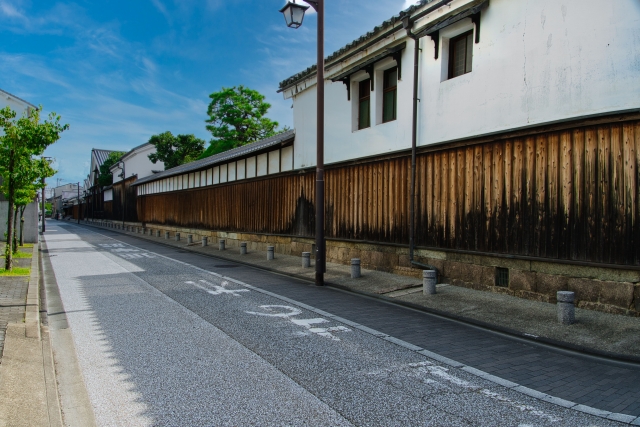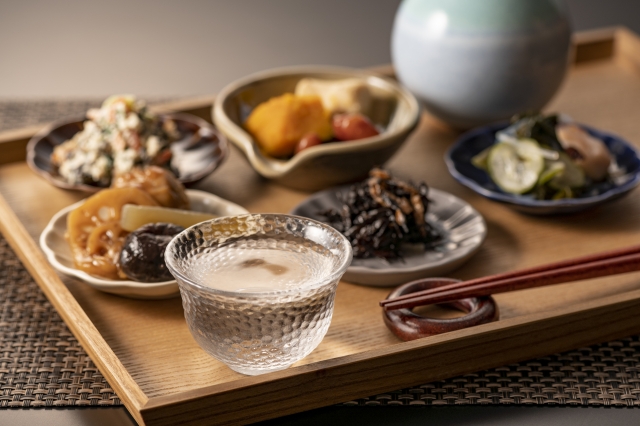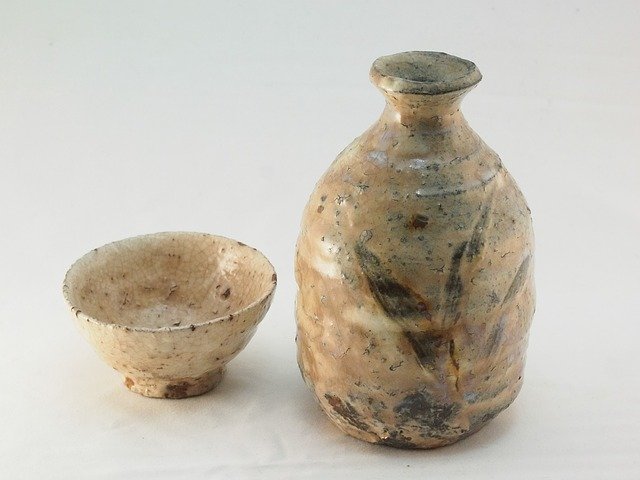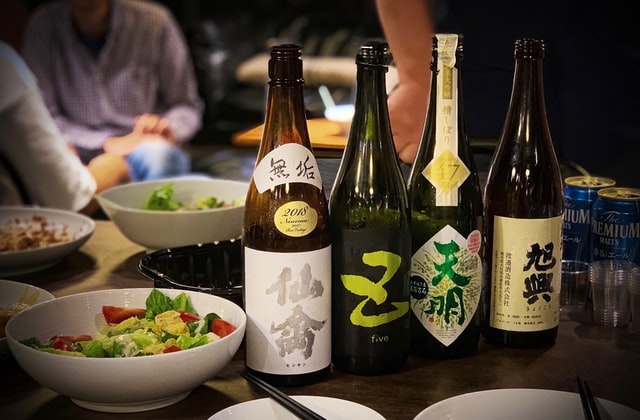Sake is a traditional Japanese brewed liquor made from rice, malted rice and water, and it already existed 1,300 years ago.
Alcohol content is about the same as wine. It may be warm or cold, and it goes very well with Japanese food.
What is Sake and can I drink it?
Materials of Sake
Rice, yeast, and malted rice
| Gluten-free | Low-gluten | Wheat-free | Low FODMAPs | |
| for Vegetarian |
| Restaurant | Food supermarket | Convenience store | Drug store |
Sake is raw and fresh Sake is better
The raw material for sake is rice. Steamed rice is decomposed with Jiuqu to make sugar, which is fermented with yeast to make alcohol. By squeezing the fermented product at the end, sake is made.
It takes about 2 months from preparation to completion. Sake is made from rice, but it has a sweet scent of fruit. Alcohol content is 15-16%.

There are various prices, the higher the price, the better the quality and taste like wine. The restaurant only offers items above a certain level, so basically you can order any of them.
Unlike wine and whiskey, sake is rarely aged. It is better to drink as new as possible. Especially, the taste of unburned sake changes over time. Therefore, expensive sake is sold in a refrigerator case.
Sake is generally drunk at night while eating food.
The food that goes well with sake is Japanese food, like sashimi, roasted, or simmered or fried food. Few people drink sake while eating Western or Chinese food. Also, when I drink sake, I don’t eat rice. If you drink sake and eat rice, you will end up consuming too much carbohydrate.

There are three types of sake, one that is warmed to about 40˚C (called “Kan”), one that is drunk at room temperature (called “Hiya”), and one that is cooled to about 5˚C (called “Reisyu”). This is not to enjoy the same sake at different temperatures, but the temperature at which you can drink the most delicious sake is determined by the sake.
The restaurant offers the best temperature. When purchasing at a food supermarket or a drug store, the characteristics of the sake and recommended drinking methods are written on the display shelf (but in Japanese).

When ordering sake at a restaurant, you will be asked for the quantity. The unit of order is as follows;
- “Ichi-gou”, 180ml: If you want to try what it is, please order the smallest unit first.
- “Shi-gou”, 720ml: When you want to drink in earnest, please order this. The amount of liquor is the same as one bottle of wine.
- “Issyo”, 1,800ml: Sake is distributed in a 1.8 L bottle. This bottle is common throughout the country, and many brewers use the same bottle. If you drink in groups, you may order this. You can take the remaining sake with you along with the bottle.
Sake is also sold at convenience stores, food supermarkets and drug stores. We recommend “Shi-gou” (720ml). There are bottles of various designs, so why not give it a try?
Try to drink Sake!
How much ?
- Restaurant: $ 6-12 per 180ml
- Food supermarket or convenience store: $ 10-20 per 720ml
Where can I drink Sake?

- Japanese restaurant
- Izakaya restaurant
Izakaya is an intermediate format between restaurants and bars. However, depending on the store, there may be few types of sake. - Food supermarket, convenience store, and drugstore
Sake is available everywhere, but the cheapest of these is the drugstore.
Precautions when drinking Sake
None.
Japanese writer’s comment for Sake
Sake is a liquor that people like and dislike. First of all, please try sake that goes well with Japanese food at a restaurant. And if you find it delicious, order it at another restaurant, or buy it at a food supermarket or convenience store. It is not recommended to buy sake from the beginning and drink only sake.
By the way, in Japan, the regulation of alcohol sales is loose, so you can buy alcohol 24 hours, 365 days. I rarely see them now, but there used to be vending machines for alcohol.
Sake is subject to a liquor tax of 11 yen per 100 ml. In Japan, consumption tax is 10%. If you buy it at a duty-free shop at the airport, there is no liquor tax or consumption tax, but only expensive sake is sold in the first place.


